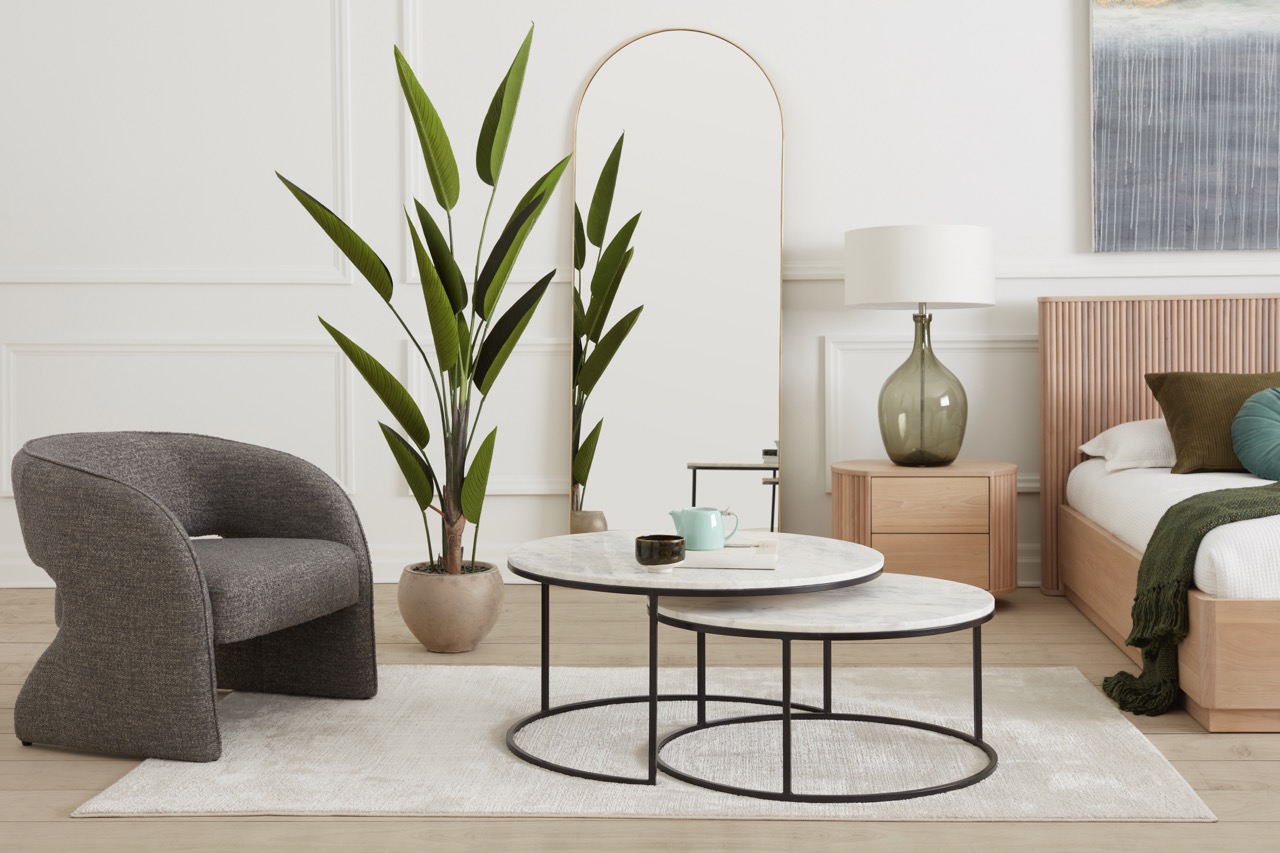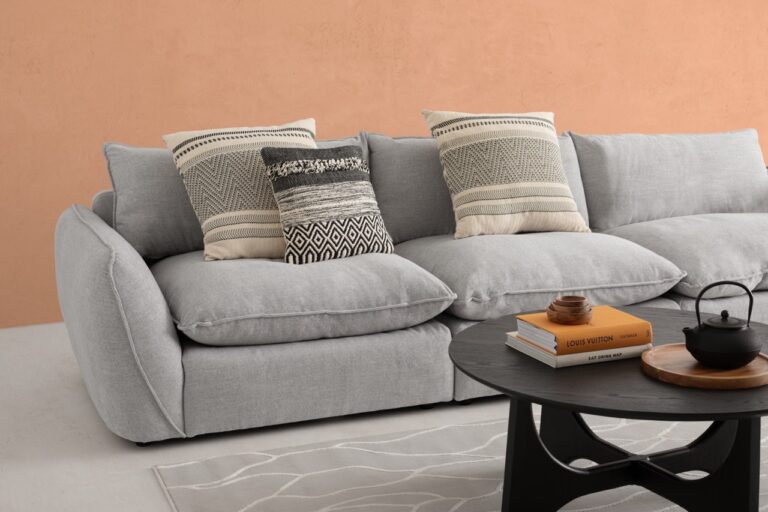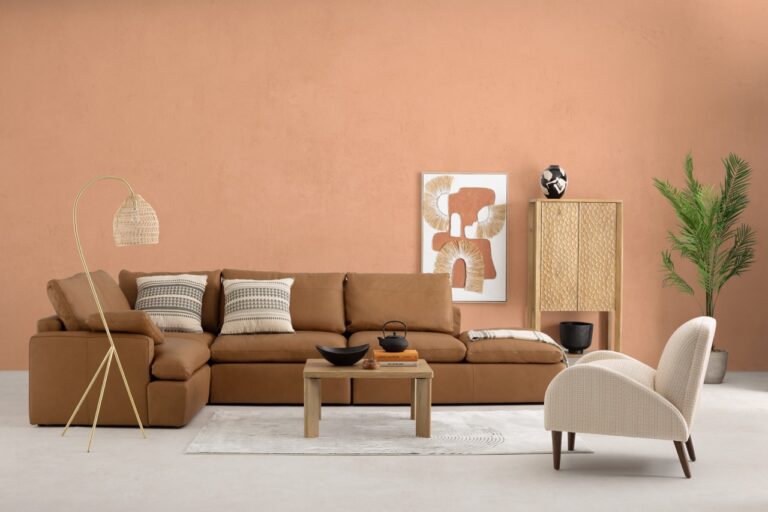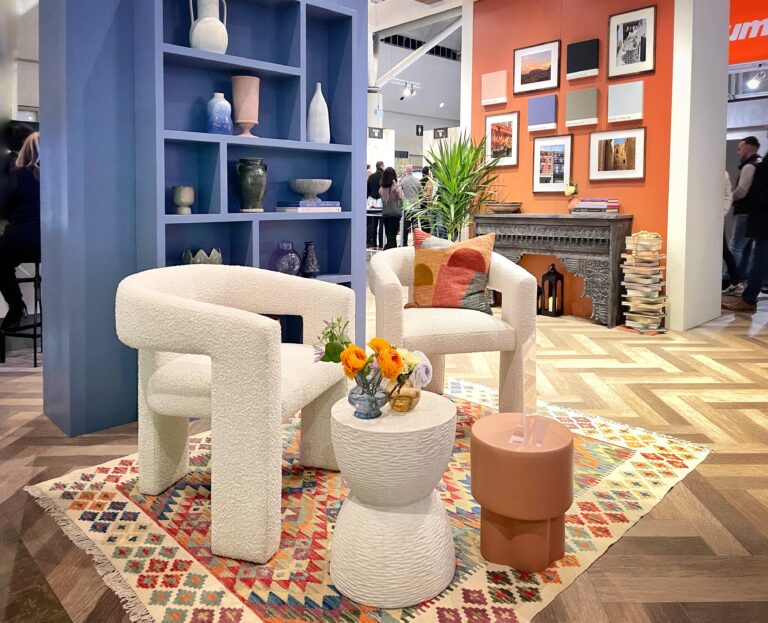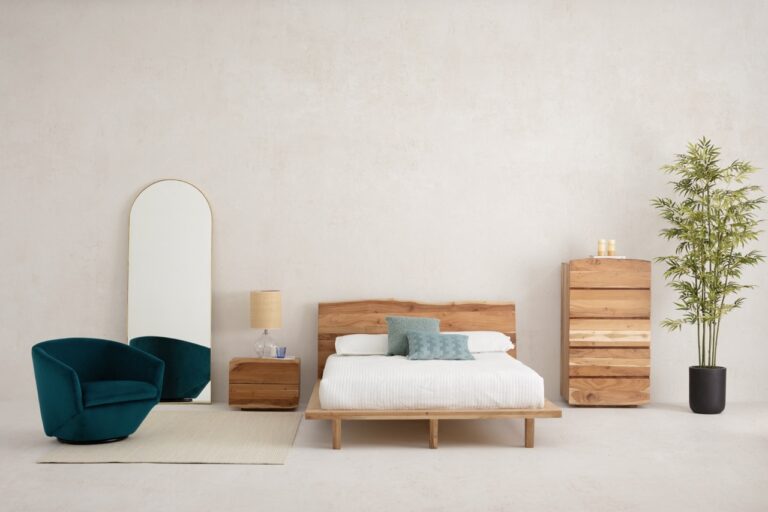Where does the curved furniture trend come from?
From mid-century to today’s curves
During the entirety of the 1950s and 1960s, mid-century and Danish furniture were recognizable by their right angles and sober lines. As the 1970s began, designers who wanted to set themselves apart from their predecessors instead adopted a more sculptural approach, with elegant and streamlined lines.
Whether we’re talking about fashion, design, or furniture, trends often follow similar cycles. The curved furniture which has been gaining popularity is essentially a contemporary reinterpretation of designs from the 1970s and 1980s.
A renewed need for comfort
After over two years of news centered around war and the pandemic, many people are feeling a need to seek out a pleasant and relaxed environment. Rounded furniture is not only pleasant to the eyes, but it is also very comfortable. Its curves are closer to the body’s natural shapes, bracing around it, than right angles would be.
It takes only a glance to imagine yourself lounging comfortably in a fabric accent chair. This is the perfect cozy spot for a bit of reading or relaxing.
What is unique about curved furniture?

The psychological benefits of curved lines
As the name suggests, curved furniture tends to favour rounded shapes and organic outlines, in contrast with straight lines and hard angles.
Our brain naturally associates curved and circular shapes with feelings of safety and serenity.
Curves are more reminiscent of the shapes that early humans would have encountered in their environment, which was filled with serpentine rivers, hills, and rounded tree trunks. This feeling of peace and serenity is what provided blond wood furniture set combining slats, rounded corners, and generous flat surfaces, to contribute to a peaceful environment.
On the other hand, angular and hard-edged objects are associated more with dangerous conditions, and can contribute to anxiety. These are reminiscent of sharp pebbles, as well as the teeth and claws of predators.
How can you integrate the curved furniture trend into your decor?
Curved furniture can be eye-catching conversation pieces. Their versatility allows for a variety of styles and decors.
Experiment with smaller rounded furniture
If you like the look of rounded furniture, but you’re not quite ready to take the plunge, start with simpler elements. Add an exotic Thai wood Niran coffee table to your living room, or maybe an Errel floor lamp with a long arcing stem, and see how these changes make your décor more pleasant.
Be extra daring!
You could also take the opposite approach, and choose a bolder piece of curved furniture. The L-shaped Elkin fabric modular set, with its inviting shape and cloud-like fluffiness, is sure to get noticed! Highlight this centerpiece even more with a throw blanket, or cushions with interesting patterns, to create contrasting elements against the soft dark blue fabric.

Create contrast with shapes
Combine the roundness of curved furniture with other decor elements that have straight or hard lines to create eye-catching contrast. For example, you could highlight the Eberia bed’s curved lines by decorating the back wall with a mosaic of rectangular frames.
Take inspiration from nature
Since curved furniture takes its inspiration from the outdoors, you can also borrow ideas from nature to highlight certain features. When it comes to colours, emphasize feelings of tranquility by favouring discrete tones which are evocative of soil, minerals, plant life, or the sky.
Combine different textures which you might find outdoors. For example, in a well-lit solarium with a natural rock floor, try a Danish inspired Nevana chair with wooden armrests, placed on a jute rug.
Decorating in a circular manner to accommodate curved furniture
Pushing curved furniture against a wall, in the same way as you would with traditional furniture, doesn’t allow a full view of its sculptural aspect. Instead, try to relocate it towards the middle of the room, so that it’s possible to move around it.
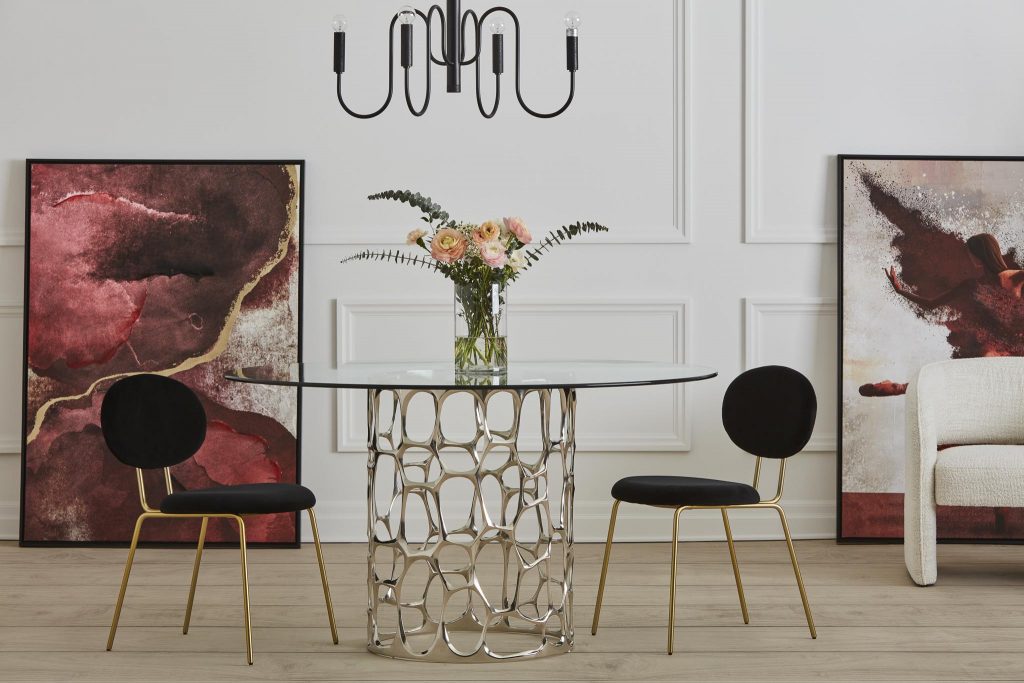
In order to create a cohesive whole, lay out your various pieces of curved furniture in such a way that their lines and shapes flow in a continuous manner, a bit like what you’d find in nature.
For example: use a Naska low table with storage as a focal point, then spread Elvea fabric accent chairs all around it, to create a corner that’s perfectly suited for conversations and gatherings.
Naturally calming, comfortable, and versatile – curved furniture has everything going for it. Make a place for it in your decor, and you’ll see why this trend is surely here to stay.

